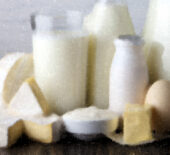Do you feel like the only one whose stomach refuses to agree with drinking cow's milk? It may be comforting to know that you are not alone. In America alone there are 20 to 30 million people who suffer through the discomfort of lactose not agreeing with them.
So what is lactose intolerance? Lactose intolerance is due to your stomach not having the enzyme which helps digest lactose, called lactase. This means when large amounts of foods or drinks which contain lactose are eaten or drunk at one time the stomach cannot cope and this leads to symptoms like bloating, pain, gas or diarrhea.
There is some good news if you live with lactose intolerance. There are ways to manage your diet and limit the unpleasant symptoms. Try these strategies:
- Drinking milk in moderate amounts at one time, this means around half a cup or less.
- Combining milk with other types of food. Like at breakfast combining the milk with cereal or drinking a small cup of milk with dinner or lunch.
- Try foods which contain less lactose like hard low fat cheese like cheddar, parmesan and swiss cheese over softer varieties like ricotta, brie or camembert.
- Lactose free cottage cheese (Brancourts Cottage Chese) is available at Woolworths.
- Allow your yoghurt stay in the fridge for a bit longer (must be consumed before the use by date) as this allows the lactase enzymes in the yoghurt to eat more of the lactose in the yogurt and may help reduce symptoms.
- Lactose free milks are readily available and it is recommended to choose soy milk or 'Like Milk' as a first preference over the many different other plant milks available such as almond, oat or rice milk. Check the calcium levels of these replacement milks and select a milk with a minimum of 100mg of calcium per 100mls.
- Calcium fortified foods can help you get enough calcium as well. Drinks like calcium fortified juice, cereal products or soy food and drink varieties are just a few examples.
- Fish with bones is a good source of calcium. Try a salmon sandwich with low fat mayonnaise and salad vegetables or sardines on toast.
- Other foods like broccoli and spinach also have calcium but unfortunately the body finds it hard to absorb much of the calcium in these foods.
- A helpful pharmaceutical buddy can be taking lactase pills or drops which do the work of the enzymes you do not have in your stomach and can make the process of eating foods with more lactose manageable.
Take home message: Having lactose intolerance is not the end of the world! Take control of the unpleasant symptoms by trying these 8 helpful hints and if symptoms still persist go and have a chat with your local GP or Accredited Practicing Dietitian to see how they can help.
Reference:
https://www.nichd.nih.gov/publications/pubs/Documents/NICHD_MM_Lactose_FS_rev.pdf





